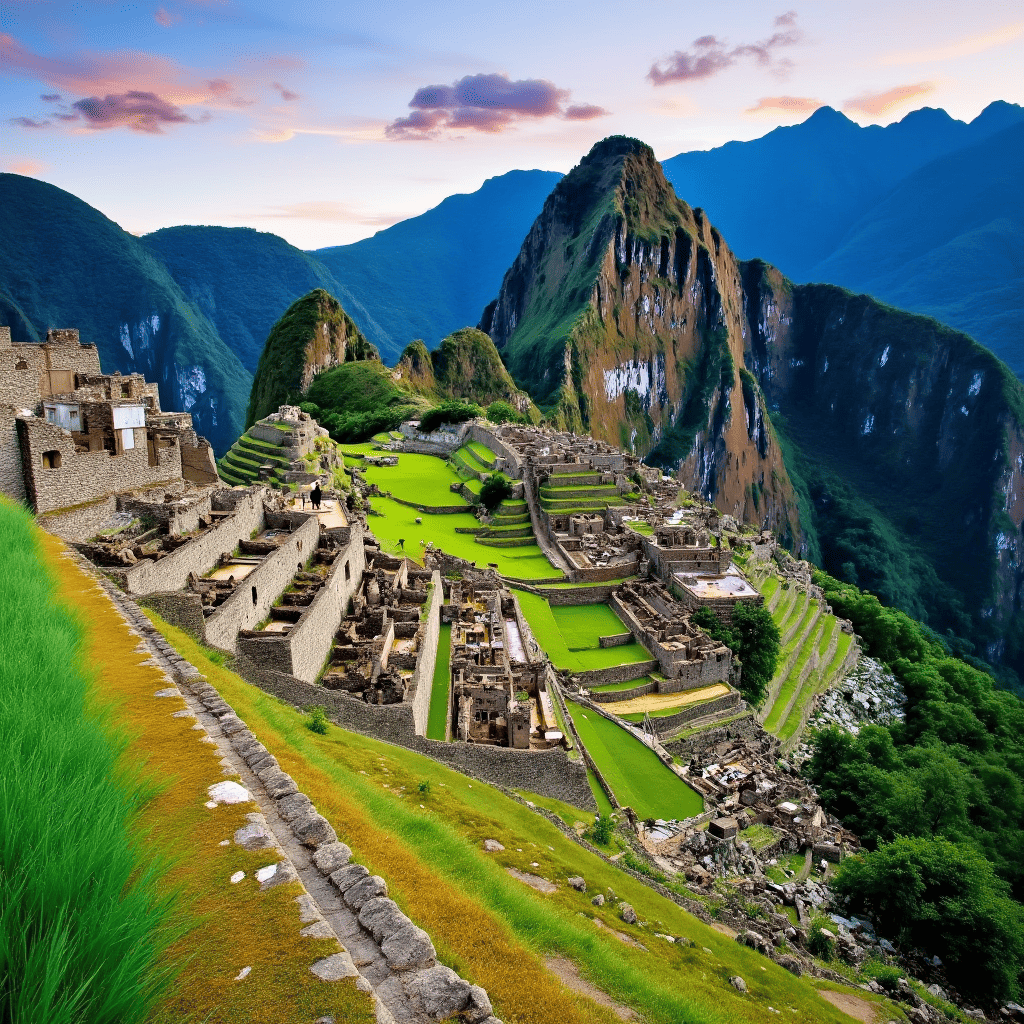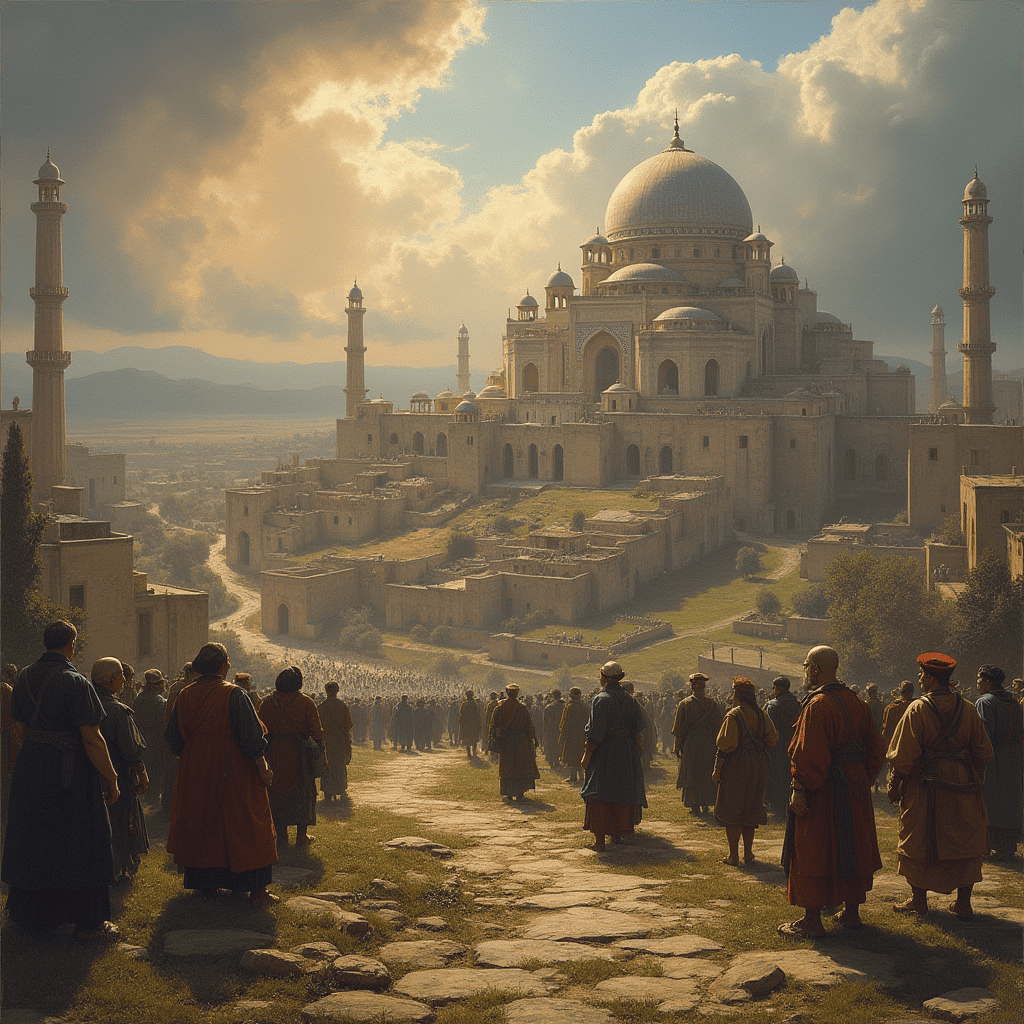Legendary cities are more than just places—they are symbols of human achievement, mystery, and the passage of time. These cities, often lost to history and rediscovered centuries later, captivate us with their grandeur, advanced engineering, and the stories they hold. Cities like Pompeii and Machu Picchu are not just archaeological sites; they are windows into ancient civilizations, offering glimpses of how people lived, worked, and thrived. Their cultural, historical, and architectural significance lies in their ability to connect us to the past, reminding us of the ingenuity and resilience of our ancestors.
The fascination with lost cities stems from their enigmatic nature. How could such advanced and thriving societies vanish almost overnight? What secrets do their ruins hold? These questions drive explorers, historians, and archaeologists to uncover the truth behind their rise and fall. Pompeii, frozen in time by the eruption of Mount Vesuvius, and Machu Picchu, hidden in the Andes for centuries, are prime examples of how these cities spark curiosity and wonder. Their rediscovery not only sheds light on ancient cultures but also serves as a reminder of the impermanence of human endeavors. Through their stories, we learn about the forces—both natural and man-made—that can lead to the decline of even the most powerful civilizations.

The Rise of Pompeii: A Thriving Roman City
Pompeii’s Golden Age
Pompeii, established around the 6th century BC, grew into one of the most prosperous cities in the Roman Empire. Located near the Bay of Naples in modern-day Italy, it became a bustling hub for trade, commerce, and culture. The city’s strategic location along major trade routes allowed it to flourish, attracting merchants, artisans, and wealthy elites. By the 1st century AD, Pompeii was a vibrant urban center, home to approximately 11,000 residents.
The city boasted impressive architecture, including grand villas, public baths, amphitheaters, and temples dedicated to Roman gods. Its streets were lined with shops, bakeries, and taverns, showcasing a thriving economy. Daily life in Pompeii was a blend of luxury and simplicity—wealthy citizens enjoyed lavish homes adorned with intricate frescoes and mosaics, while the working class contributed to the city’s economic engine through trade and craftsmanship. Pompeii was a microcosm of Roman society, reflecting its values, traditions, and advancements.
The Role of Mount Vesuvius
Mount Vesuvius, the looming volcano just a few miles from Pompeii, played a paradoxical role in the city’s history. While its fertile volcanic soil enriched the surrounding farmland, enabling agriculture to thrive, it also posed a constant, albeit underestimated, threat. The people of Pompeii were unaware of the volcano’s destructive potential, as it had been dormant for centuries. This ignorance allowed the city to prosper, with its inhabitants building their lives in the shadow of what would eventually become their doom.
The Tragic Fall of Pompeii
The Eruption of Mount Vesuvius (79 AD)
On August 24, 79 AD, Mount Vesuvius erupted in one of the most catastrophic volcanic events in history. The eruption began with a massive column of ash and pumice shooting into the sky, darkening the sun and raining debris over Pompeii. Over the next 24 hours, the city was buried under layers of volcanic ash and pumice, some reaching depths of up to 20 feet.
The immediate impact was devastating. Buildings collapsed under the weight of the ash, and toxic gases suffocated those who had not fled in time. The eruption preserved Pompeii in a tragic yet remarkable state, freezing the city in a moment of chaos. Plaster casts of victims, created by archaeologists centuries later, reveal the final moments of Pompeii’s inhabitants, offering a haunting glimpse into their lives.
Rediscovery and Preservation
Pompeii remained buried and forgotten for nearly 1,700 years until its rediscovery in 1748 during excavations under the rule of the Bourbon monarchs. The city’s preservation under layers of ash provided an unparalleled snapshot of Roman life. Intact buildings, artifacts, and even graffiti on walls offered invaluable insights into the daily lives, culture, and society of ancient Romans.
The significance of Pompeii’s preservation extends beyond archaeology. It serves as a time capsule, allowing modern historians to study Roman engineering, art, and urban planning in extraordinary detail. Moreover, Pompeii’s tragic fate has become a cautionary tale about the power of nature and the vulnerability of human civilization. Today, it stands as a UNESCO World Heritage Site, attracting millions of visitors each year who come to witness the legacy of a city that rose to greatness only to be silenced by nature’s fury.

Machu Picchu: The Lost City of the Inca Empire
The Rise of Machu Picchu
Machu Picchu, often referred to as the “Lost City of the Incas,” is one of the most iconic archaeological sites in the world. Built in the 15th century during the height of the Inca Empire, this breathtaking city is perched high in the Andes Mountains of modern-day Peru. Historians believe Machu Picchu was constructed under the rule of the Inca emperor Pachacuti as a royal estate or religious retreat. Its remote location, surrounded by steep cliffs and dense cloud forests, suggests it was designed to be a sanctuary, hidden from the outside world.
The architectural brilliance of Machu Picchu is a testament to the Inca’s advanced engineering skills. The city features precisely cut stone blocks that fit together without mortar, terraced fields for agriculture, and an intricate system of water channels. Key structures, such as the Temple of the Sun and the Intihuatana stone, highlight the Inca’s deep connection to astronomy and their worship of natural elements. Machu Picchu was not just a physical marvel but also a spiritual and cultural hub, reflecting the Inca’s reverence for nature and their sophisticated understanding of their environment.
The Mystery of Its Abandonment
Despite its grandeur, Machu Picchu was abandoned less than a century after its construction, around the time of the Spanish conquest of the Inca Empire in the 16th century. The exact reasons for its abandonment remain shrouded in mystery. Some theories suggest that the arrival of the Spanish conquistadors disrupted Inca society, leading to the city’s decline. Others propose that diseases brought by the Europeans, such as smallpox, decimated the population, forcing them to leave.
Another intriguing theory is that Machu Picchu was abandoned due to internal strife or environmental factors, such as drought or soil depletion. Whatever the cause, the city was left to nature, hidden beneath dense vegetation for centuries. Its isolation and the Inca’s decision not to reveal its location to the Spanish invaders allowed Machu Picchu to remain untouched until its rediscovery in 1911 by American explorer Hiram Bingham. This secrecy preserved the city’s structures and artifacts, making it one of the most well-preserved examples of Inca civilization.
Lessons from the Fall of Legendary Cities
Common Themes in Their Decline
The stories of Pompeii and Machu Picchu reveal recurring themes in the decline of legendary cities. Natural disasters, such as the eruption of Mount Vesuvius, demonstrate how even the most advanced societies are vulnerable to the forces of nature. Similarly, warfare and conquest, as seen in the Spanish invasion of the Inca Empire, can lead to the collapse of thriving civilizations. Societal factors, including disease, environmental degradation, and internal conflict, also play significant roles in the abandonment of cities.
While Pompeii’s destruction was sudden and catastrophic, Machu Picchu’s decline was more gradual, influenced by external pressures and possibly internal challenges. Despite these differences, both cities serve as reminders of the fragility of human achievements in the face of overwhelming forces.
What These Cities Teach Us Today
The fall of Pompeii and Machu Picchu offers valuable lessons for modern society. Their stories highlight the fragility of human civilizations and the importance of resilience in the face of natural and man-made threats. They also underscore the need to preserve historical sites, not only as windows into the past but also as sources of inspiration and education for future generations.
By studying these legendary cities, we gain a deeper understanding of our shared history and the factors that contribute to the rise and fall of civilizations. Their preservation allows us to honor the ingenuity and creativity of our ancestors while reminding us to protect our cultural heritage in an ever-changing world.
Conclusion: The Legacy of Legendary Cities
The stories of Pompeii and Machu Picchu are more than just tales of ancient civilizations—they are powerful reminders of the impermanence of human achievements and the forces that shape our world. These legendary cities, once thriving centers of culture, innovation, and life, now stand as silent witnesses to the passage of time. Their rise and fall offer profound insights into the resilience and vulnerability of human societies.
Pompeii, frozen in time by the catastrophic eruption of Mount Vesuvius, serves as a stark example of nature’s unpredictable power. Its preserved ruins provide an unparalleled glimpse into Roman life, capturing moments of both beauty and tragedy. Machu Picchu, hidden away in the Andes and abandoned under mysterious circumstances, reflects the ingenuity of the Inca Empire and the challenges they faced from external and internal pressures. Together, these cities illustrate the delicate balance between human ambition and the forces that can unravel even the greatest civilizations.
The lessons from Pompeii and Machu Picchu resonate deeply in today’s world. They remind us of the importance of understanding and respecting the natural environment, as well as the need to address societal challenges such as conflict, disease, and environmental degradation. These cities also highlight the value of preserving our cultural heritage, ensuring that future generations can learn from the triumphs and tragedies of the past.
